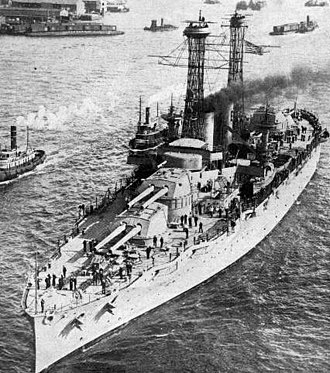The U.S.S. Texas is the last surviving warship of its kind--powered by reciprocating steam engines. It was built during a period in which naval authorities were switching to the newly-developed steam turbine for propulsion, but were unsure of its suitability. Only one more warship, the New York, commissioned one month after the Texas, was to be powered by the reciprocating engines. Such was the state of the art at the time that the Texas¹ engines were described as "the ultimate in naval reciprocating engine construction." They could be rightfully described in these glowing terms, as was shown by their dependable service from 1914 until after World War II, when the Texas was removed from the Navy's active roster.
The Texas was propelled by twin screws driven by 4-cylinder triple-expansion engines having a total designed horsepower of 28, 100 at 125 revolutions per minute, with steam at 265 pounds per square inch. Cylinder bores were: High Pressure, 39 inches; Intermediate Pressure, 63 inches; and two low pressure 83 inch cylinders, all with a 48-inch stroke. Cylinder sequence was: Forward Low Pressure, High Pressure, Intermediate Pressure, Aft Low Pressure, The crank angles were 90 degrees, and the working sequence was: High, Intermediate, Forward Low, Aft Low. Piston valves were used on all cylinders, one for the high pressure cylinder, and two for each of the others, actuated by Stephenson's double-link valve gear. The bedplates were cast steel and the framing Navy-type forged steel columns bolted to the bedplate and cylinders, braced by diagonal, cross, and longitudinal stays. The cylinders and valve chests were cast iron, the working liners being close-grained cast iron. All cylinders except the high pressure were steamjacketed around the liners and at both ends. The conical pistons were cast steel, except the high pressure, which was cast iron. All working and moving parts of the main engines, except the valve links and valve-stem guides, were force-lubricated under a pressure of about 50 pounds per square inch. The crank pits were totally enclosed by galvanized sheet-steel casings up to within 18 inches of the bottoms of the cylinders.



